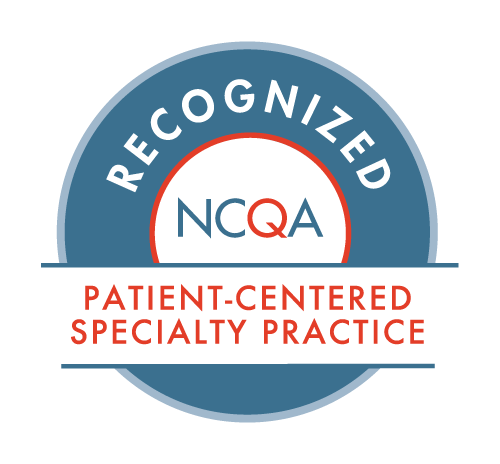Cardiac Arrhythmias
What are Cardiac Arrhythmias?
Cardiac arrhythmias are one category of heart disease. An arrhythmia occurs when your heart beats either too quickly, too slowly, or in an irregular pattern.
There are several types of arrhythmias, including:
- Atrial fibrillation – this is a common type of arrhythmia. It is an erratic and chaotic heartbeat in the upper chambers of your heart, often affecting your heart’s ability to pump blood correctly.
- Atrial flutter – this is a fast heartbeat that causes the upper chambers of your heart (atria) to beat too quickly, but usually in a regular rhythm.
- Bradycardia – this is a heartbeat that is less than 60 beats per minute.
- Supraventricular tachycardia – is an abnormally fast or erratic heartbeat that affects the upper chambers of the heart.
- Ventricular fibrillation – this is a very fast, chaotic heartbeat in the lower chambers (ventricles) of the heart which is typically fatal if untreated.
Symptoms
Common symptoms of cardiac arrhythmias include:
- Dizziness or feeling faint
- Palpitations
- Difficulty breathing
- Chest pain
- Fatigue, tiredness
Risk Factors
Cardiac arrhythmias can be caused by cardiac ischemia (reduced blood flow to the heart muscle) or certain medication side effects. Cardiac arrhythmias have many possible causes which include:
- Stress
- Smoking
- Caffeine
- Dehydration
- Acute illness
- Heart attack (acute and prior)
- Coronary artery disease
- Congestive heart failure
- High blood pressure
- Diabetes mellitus
- Excessive alcohol
- Obesity
- Sleep apnea
- Cardiomyopathy
- Congenital heart disease
- Thyroid disease
- Electrolyte imbalance
- Certain drugs and supplements
Diagnosis
Arrhythmias can be treated by an electrophysiologist, who is a cardiologist that has additional specialized training in the diagnosis and treatment of heart rhythm disorders. After performing a physical examination and evaluating the symptoms, the electrophysiologist may perform a variety of diagnostic tests to help confirm the presence of an arrhythmia. These tests include:
- Electrocardiogram (ECG or EKG) – this is a non-invasive test where electrodes (small patches that stick to the skin are placed at certain spots on the chest, arms, and legs). The electrodes are connected to an ECG machine. Electrical activity of the heart is measured, interpreted, and printed out. Changes in ECG can be a sign of a variety of heart-related conditions.
- Stress test – this test is used to determine if the arrhythmias worsen with exercise. This test can also help determine if there is an underlying heart disease associated with the arrhythmia.
- Echocardiogram – this type of ultrasound is used to provide a view of the heart to determine if there is a heart muscle or valve disease that is causing an arrhythmia.
- Holter monitor – this portable device continuously records the heart’s electrical activity during daily activities for 24 to 48 hours. It can be used for multiple reasons including, monitoring abnormal heart rhythms, verifying the absence of abnormal rhythms, assessing heart rates, or establishing a correlation between symptoms and heart rhythm.
- Cardiac event monitor – a longer-duration, non-invasive, portable method for diagnosing a cardiac arrhythmia.
- Telemetry monitor – another longer-duration mobile device that transmits heart information such as heart rates and rhythms from various remote locations in real-time.
- Implantable loop recorder – this monitors your heart rhythm for three to five years, allowing it to record information that other tests may miss.
- Cardiac electrophysiology (EP) study or testing – this test is used to assess the heart’s electrical system or activity.
Treatments
Cardiac arrhythmias can sometimes be treated by medications such as beta blockers or calcium channel blockers to slow down the heart rate or block some electrical signals from spreading through the heart. They can also sometimes be treated by making lifestyle changes such as quitting smoking, limiting alcohol consumption, losing weight, exercising, limiting caffeine or other stimulants, and by avoiding activities that trigger irregular heart rhythms.
When conservative treatments are ineffective, there are a number of procedures that your cardiologist might discuss with you, such as:
-
- Cardioversion, which delivers an electrical shock to your chest wall, synchronizing the heart and allowing normal rhythm to restart.
- Ablation, in which energy is delivered through a catheter to correct the arrhythmia.
- Insertion of a pacemaker, which will prevent a slow heart rate.
- Defibrillator implantation, in which a device is placed under the skin and monitors your heart rate. Thin wires connect the implanted device to your heart. When an abnormal heart rhythm occurs, it delivers an electric shock, which restores a normal heartbeat.
The Center for Atrial Fibrillation and Electrophysiology
If you are struggling with symptoms from cardiac arrhythmias, Hunterdon Cardiovascular Associates has a facility dedicated to its treatment and diagnosis called the Center for Atrial Fibrillation and Electrophysiology.
At our state-of-the-art center, we offer cutting-edge technology to not only manage your individual symptoms but to determine the underlying cause of your arrhythmia in order to more definitively treat the root cause. Contact us today to request an appointment with one of our specialists.



